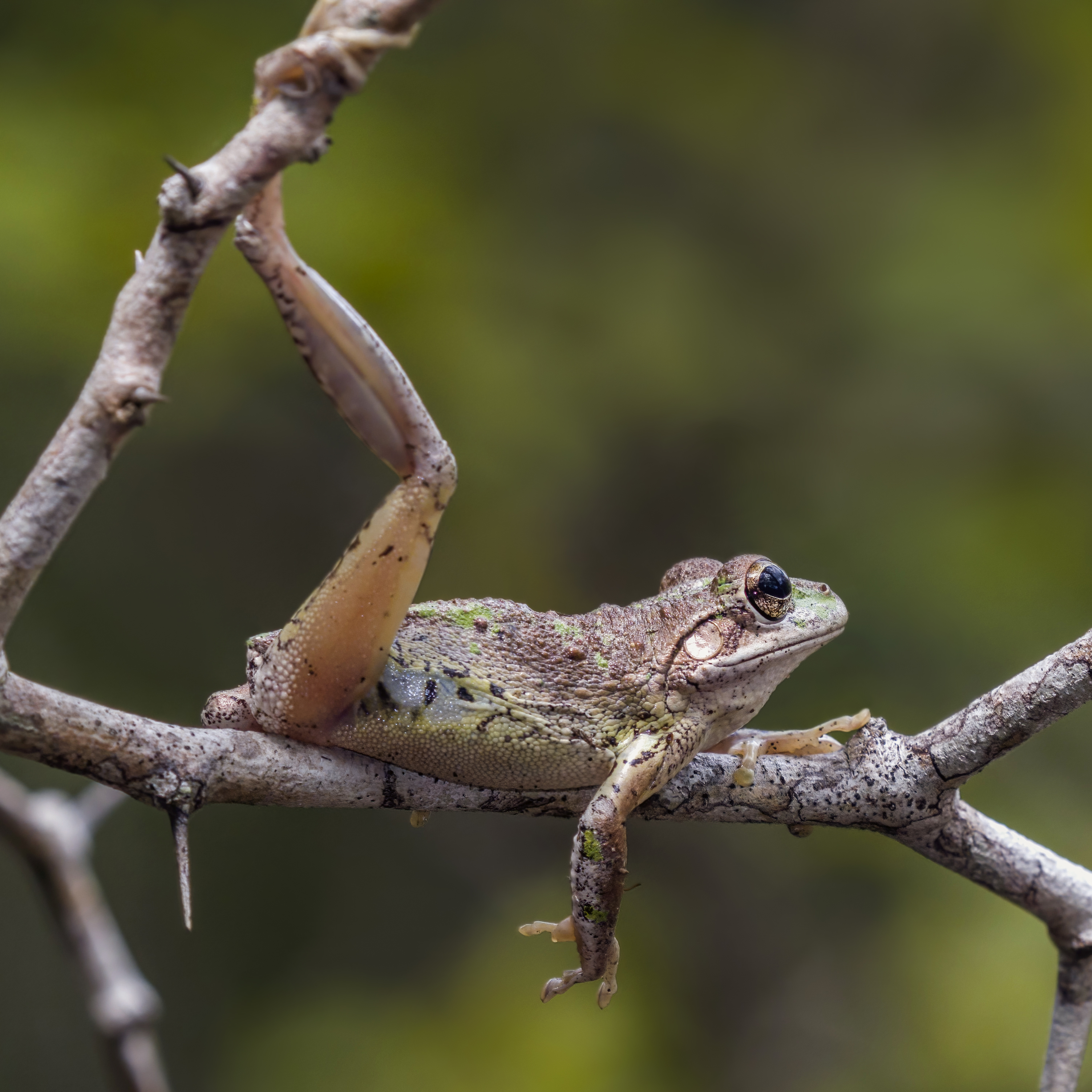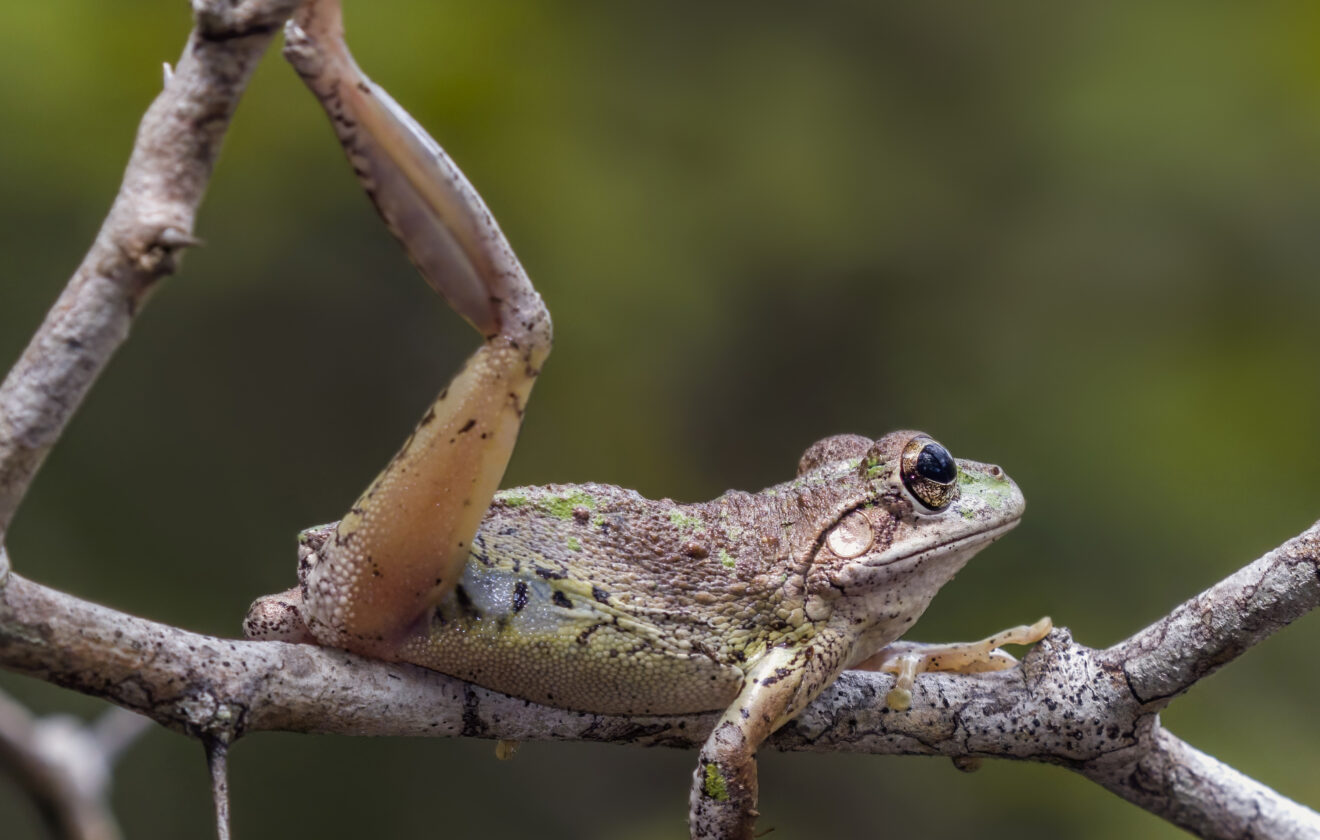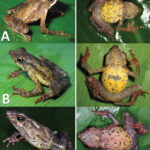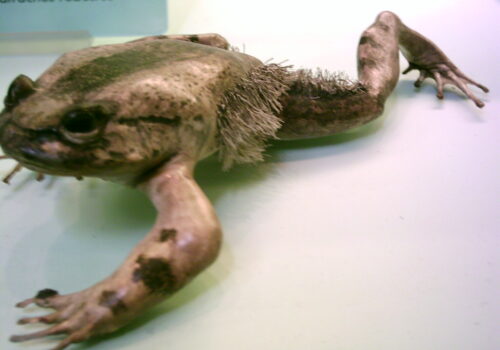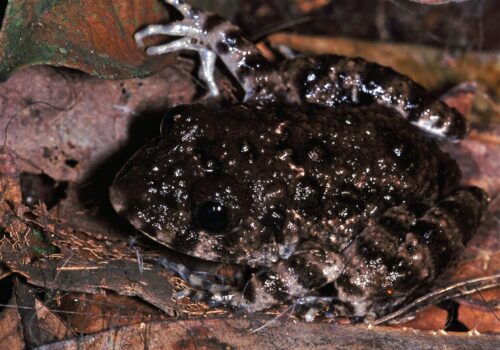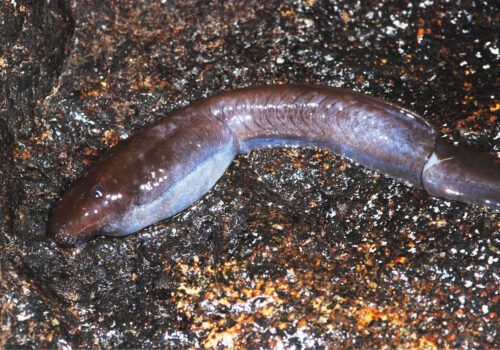- Introduction: A Quiet Jewel of Africa's Montane Forests
- Taxonomy and Classification
- Natural Habitat: The Enchanted Montane Forests of Central Africa
- Physical Characteristics: Camouflage and Elegance in Symbiosis
- Behavior and Life Cycle: A Life Among Leaves and Mist
- Ecological Role: Guardians and Indicators of Forest Health
- Threats and Conservation Status: Fragile Existence in a Changing World
- Cultural and Scientific Significance: An Unsung Symbol of Biodiversity
- Conclusion: Protecting a Hidden Treasure in Africa's Heart
Introduction: A Quiet Jewel of Africa’s Montane Forests#
Silently perched on moss-covered branches beneath dense forest canopies, a small frog glistens in the light of dripping foliage. Invisible at first glance among the tangled greenery and shadows, this elusive creature suddenly reveals itself—glassy, watchful eyes peering curiously into the humid night air. Meet Leptopelis fiziensis, a delicate and secretive inhabitant of Africa’s montane forests whose presence indicates not only the richness but also the fragile balance of its habitat.
Residing in the evergreen sanctuaries of eastern Democratic Republic of Congo and adjacent parts of Tanzania, Leptopelis fiziensis remains relatively unknown outside specialized herpetological circles. But beneath its modest reputation lies fascinating biological intricacies and subtle ecological significance. For nature enthusiasts and conservationists alike, discovering this shy frog provides not only scientific intrigue but a deeper empathy for conserving disappearing ecosystems.
Taxonomy and Classification#
Leptopelis fiziensis belongs to the Arthroleptidae family, a diverse assemblage commonly known as African tree frogs, reed frogs, or squeakers. Specifically, it sits within the genus Leptopelis, a remarkable group of frogs recognized for their arboreal lifestyles and distinctive vocalizations.
First described in detail by Laurent in 1973, Leptopelis fiziensis closely relates to several of its sibling species within the genus, such as Leptopelis kivuensis and Leptopelis karissimbensis. While superficially similar, these frogs distinctly occupy varying niches, often differing subtly in calls, coloration, and breeding priorities, allowing them to coexist without direct competition. Such specialized separation underscores nature’s remarkable ability to diversify even within confined ecological communities.
Natural Habitat: The Enchanted Montane Forests of Central Africa#
Exploring the native habitat of Leptopelis fiziensis draws one deeper into the undisturbed montane rainforests of the Albertine Rift, a biodiversity hotspot nestled in East Africa. Primarily present near Lake Tanganyika and surrounding highlands, its preferred habitats encompass lush, moist forests draped with ephiphytes and shrouded in persistent mist. Solitary streams meander through beds of moss and fern-laden forest floors, creating perfect humid microenvironments vital to the survival of amphibians.
Unlike many frogs that bask openly during daylight hours, Leptopelis fiziensis prefers the hidden sanctuaries beneath leaf canopies and in shaded moist crevices, emerging under the cloak of darkness. The microclimates of its home forest create a tapestry of narrow temperature ranges and constant humidity levels—exact conditions critical to its wellbeing, reproduction, and overall survival strategies.
Physical Characteristics: Camouflage and Elegance in Symbiosis#
Observing Leptopelis fiziensis closely, one is immediately captivated by its understated beauty. It generally reaches lengths of approximately 3.5 centimeters (about 1.4 inches), a small stature ideal for its arboreal lifestyle. The vividly patterned body displays exquisite colors blending greens, browns, and greys, creating a perfectly calculated mosaic of camouflage against the forest’s shadows, lichens, and epiphytes.
The frog’s large, protuberant eyes—often highlighted with metallic, golden hues—equip it effortlessly for nocturnal hunting, heightening visual acuity even in near-total darkness. This combination of cryptic coloration and keen eyesight is a testament to millions of years of evolutionary fine-tuning, precisely matched to the montane forest where it has evolved and thrives quietly today.
Behavior and Life Cycle: A Life Among Leaves and Mist#
A Nocturnal Lifestyle Among Canopies#
As daylight fades and night descends across the mountain slopes, Leptopelis fiziensis begins its slow-paced emergence. Lethargic during daylight hours, the frog becomes an agile, strategic predator at night, feeding primarily on insects like moths, beetles, and various flies that swarm through illuminated patches beneath the moonlit canopy. Utilizing stealth and speed, it expertly captures prey using lightning-quick tongue strikes, showcasing a remarkable balance of patience and swift efficiency.
Mating Calls in the Misty Twilight#
During breeding season, males break their characteristic silence, calling to potential mates with soft, melodious trills that resonate gently through mountain slopes and dense wet foliage. This vocal melody serves not only to attract females but also demarcates territories, subtly communicating boundaries with neighboring males.
Female Leptopelis fiziensis, drawn by the rhythmic auditory cues, lay clutches of adhesive eggs on leaves hanging directly over forest streams. After a period of growth within egg capsules, tadpoles hatch and descend into the clean, gently flowing waters beneath them, beginning their delicate aquatic phase. During these vulnerable early days, dense vegetation cover and hidden pools are essential safeguards, subtly ensuring survival as they metamorphose into adulthood and join their kin above the waters at maturity.
Ecological Role: Guardians and Indicators of Forest Health#
In the tangled web connecting plants, creatures, water, and soil, frogs like Leptopelis fiziensis quietly fulfill essential, yet often unnoticed, roles. They provide valuable pest control by regulating insect populations. Simultaneously, these amphibians constitute an integral food source for birds, snakes, and mammalian predators, forming vital connections within the ecological network of their montane habitat.
Perhaps most importantly, as a species strongly reliant on clean water, stable climate, and pristine forests, Leptopelis fiziensis acts as an indicator for environmental change. Declines in its populations can foreshadow more widespread ecosystem degradation, making it indispensable as a bellwether of conservation health.
Threats and Conservation Status: Fragile Existence in a Changing World#
Concern is steadily mounting for Leptopelis fiziensis, as ongoing global environmental crises pose increasing risks. Habitat loss remains one of the major threats, owed largely to extensive deforestation, agricultural expansion, logging, and wildfire threats in East Africa’s montane forests. The highly specialized habitat preferences significantly increase their vulnerability to land-use changes, and disturbances that disrupt precise ecological balance threaten their survival.
Although comprehensive data are limited, current evidence suggests worrying population declines. Presently listed as Data Deficient by the IUCN, the lack of tangible population assessments underscores the urgent necessity of field research to definitively assess conservation status and effectively strategize future protection initiatives. Local and international conservation programs are ongoing efforts, integrating community education, habitat restoration, and environmental law enforcement to safeguard surviving forests and preserve the habitat integrity required for these delicate amphibians.
Cultural and Scientific Significance: An Unsung Symbol of Biodiversity#
Though less widely acknowledged in folklore compared to charismatic megafauna, the tree frogs of Central Africa embody the quiet magic of the region’s biodiversity. Locally, amphibians often appear within subtle cultural traditions as symbols of fertility, rain-bringing, and environmental resilience, highlighting an inherent respect local communities possess for nature. On a global scale, species like Leptopelis fiziensis contribute to critical scientific research about amphibian diversity, ecology, and evolutionary history. Understanding the genetic and ecological makeup of these species provides insights into wider biodiversity conservation strategies and environmental resilience mechanisms needed in an era of rapid climate change.
Conclusion: Protecting a Hidden Treasure in Africa’s Heart#
The story of Leptopelis fiziensis resonates gently but powerfully—highlighting the beauty, complexity, and vulnerability hidden within smaller, lesser-known wildlife. Their tranquil presence, breathtaking camouflage, and finely-tuned adaptation remind us of life’s infinite capacity for innovation and survival, but also of its alarming fragility.
As inhabitants and custodians of this planet, we have an opportunity and a responsibility to protect these secretive amphibian ambassadors of rich montane ecosystems. Let our understanding and compassion inspire proactive conservation—their survival intertwined with ours, creating harmony between human communities and wild species whose hidden lives enrich the planet in infinitely precious ways.



